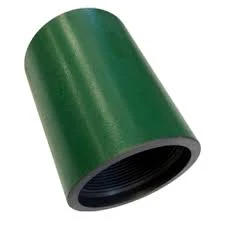- Afrikaans
- Albanian
- Amharic
- Arabic
- Armenian
- Azerbaijani
- Basque
- Belarusian
- Bengali
- Bosnian
- Bulgarian
- Catalan
- Cebuano
- Corsican
- Croatian
- Czech
- Danish
- Dutch
- English
- Esperanto
- Estonian
- Finnish
- French
- Frisian
- Galician
- Georgian
- German
- Greek
- Gujarati
- Haitian Creole
- hausa
- hawaiian
- Hebrew
- Hindi
- Miao
- Hungarian
- Icelandic
- igbo
- Indonesian
- irish
- Italian
- Japanese
- Javanese
- Kannada
- kazakh
- Khmer
- Rwandese
- Korean
- Kurdish
- Kyrgyz
- Lao
- Latin
- Latvian
- Lithuanian
- Luxembourgish
- Macedonian
- Malgashi
- Malay
- Malayalam
- Maltese
- Maori
- Marathi
- Mongolian
- Myanmar
- Nepali
- Norwegian
- Norwegian
- Occitan
- Pashto
- Persian
- Polish
- Portuguese
- Punjabi
- Romanian
- Russian
- Samoan
- Scottish Gaelic
- Serbian
- Sesotho
- Shona
- Sindhi
- Sinhala
- Slovak
- Slovenian
- Somali
- Spanish
- Sundanese
- Swahili
- Swedish
- Tagalog
- Tajik
- Tamil
- Tatar
- Telugu
- Thai
- Turkish
- Turkmen
- Ukrainian
- Urdu
- Uighur
- Uzbek
- Vietnamese
- Welsh
- Bantu
- Yiddish
- Yoruba
- Zulu
Understanding the Role of Drill Pipe Pup Joints in Oil and Gas Operations
Understanding Drill Pipe Pup Joints
In the oil and gas industry, the efficiency and reliability of drilling operations depend on the proper management of various equipment components. One such important component is the drill pipe pup joint, which plays a crucial role in the drilling process. This article aims to provide an overview of drill pipe pup joints, their purpose, specifications, and importance in drilling operations.
A pup joint is a short section of pipe used to make up the overall length of the drill string to accommodate specific drilling requirements. Typically, a pup joint is anywhere from a few feet to several feet long, and it can be employed in various sizes to match the drill pipe being used. These joints are essential for adjusting the length of the drill string, allowing for greater flexibility during drilling operations.
One of the primary functions of pup joints is to facilitate the operation in challenging drilling conditions. For instance, if a drilling project requires reaching a particular depth but the existing drill string is inadequate, a pup joint can be added to extend the reach, enabling the drill to penetrate deeper into the earth. This adaptability is vital for optimizing drilling performance and addressing unforeseen changes in geological formations.
drill pipe pup joint

Pup joints are typically made from the same materials as standard drill pipes to ensure compatibility and structural integrity. Common materials include high-strength steel alloys designed to withstand extreme pressure and corrosion. They come in various sizes and wall thicknesses to accommodate different drilling scenarios, and can also feature various connections, such as threaded or welded ends, to connect securely with the rest of the drill string.
Maintenance and inspection of pup joints are critical for ensuring safety and efficiency in drilling operations. Regular checks for wear, corrosion, or damage can prevent catastrophic failures during drilling, which could lead to costly delays and hazardous situations. Employing proper handling and storage techniques also contributes to the longevity and performance of pup joints.
In summary, drill pipe pup joints are an integral part of drilling operations in the oil and gas sector. Their ability to extend the length of the drill string enhances drilling flexibility and adaptability in diverse geological conditions. Understanding their specifications, functions, and maintenance protocols is essential for drilling engineers and operators to ensure safe and efficient drilling activities. As technology advances, the design and manufacturing of pup joints are likely to evolve, further improving their functionality and effectiveness in the field.
-
Tubing Pup Joints: Essential Components for Oil and Gas OperationsNewsJul.10,2025
-
Pup Joints: Essential Components for Reliable Drilling OperationsNewsJul.10,2025
-
Pipe Couplings: Connecting Your World EfficientlyNewsJul.10,2025
-
Mastering Oilfield Operations with Quality Tubing and CasingNewsJul.10,2025
-
High-Quality Casing Couplings for Every NeedNewsJul.10,2025
-
Boost Your Drilling Efficiency with Premium Crossover Tools & Seating NipplesNewsJul.10,2025







